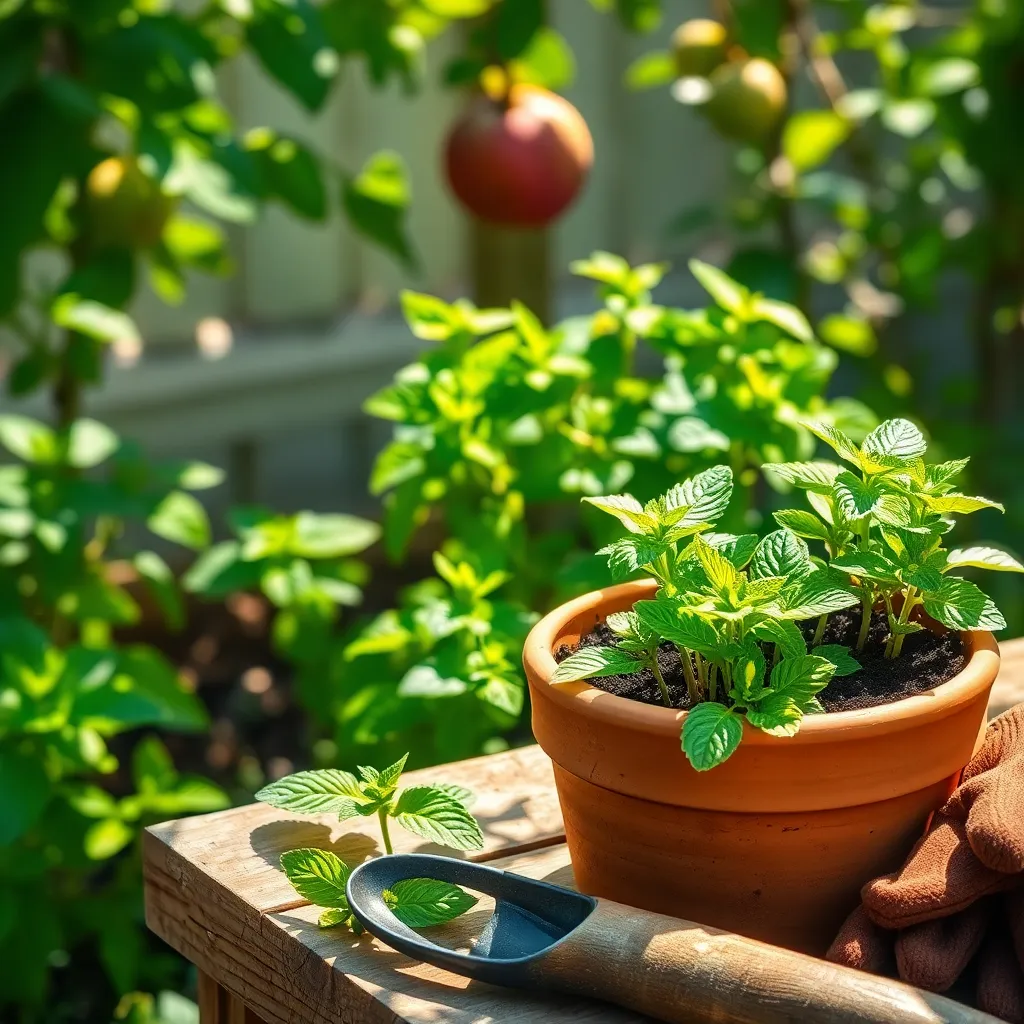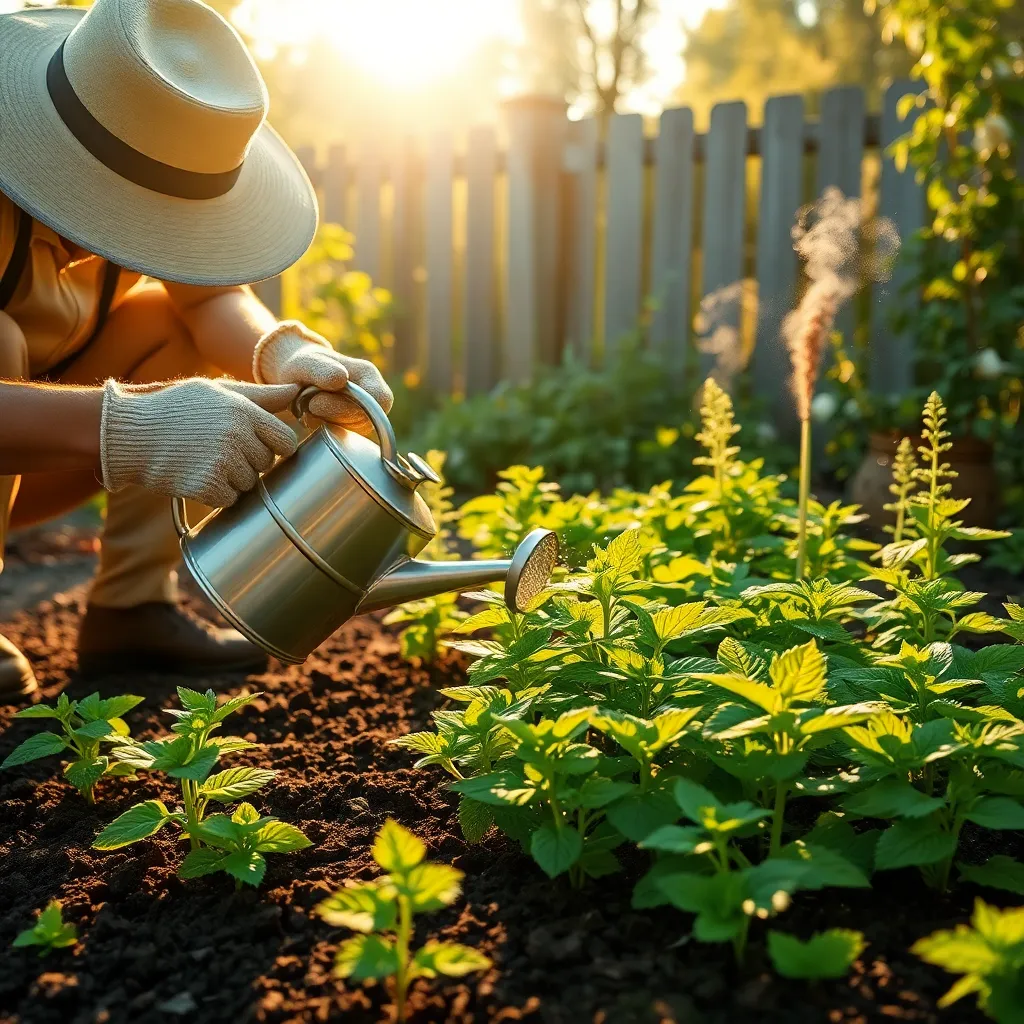Imagine stepping into your garden and being enveloped by the refreshing aroma of mint—a scent so invigorating that it instantly uplifts your spirits. Whether you’re a novice gardener or a seasoned green thumb, growing mint outdoors is a rewarding endeavor that not only enhances your garden’s sensory appeal but also offers a bounty of culinary possibilities. This versatile herb, with its vibrant leaves and robust growth, can transform any patch of soil into an aromatic oasis, inviting you to explore the joys of gardening with confidence.
The allure of mint stretches beyond its fragrant leaves; it is a hardy plant that thrives with minimal fuss, making it an ideal choice for gardeners of all levels. You’ll discover how to cultivate a thriving mint patch, from selecting the right variety to understanding its growth habits and mastering the art of propagation. This guide will walk you through each step, ensuring your mint plants flourish throughout the growing season and beyond, ready to be harvested for teas, garnishes, and more.
In the pages ahead, we’ll delve into the nuances of soil preparation, watering techniques, and pest management, all tailored to maximize your mint’s health and vigor. As you embark on this botanical journey, you’ll gain insights into the challenges and triumphs of outdoor mint cultivation and learn how to seamlessly integrate this herb into your garden’s ecosystem. With our practical tips and shared wisdom, you’ll soon find yourself reveling in the simple pleasures of nurturing mint, a plant that promises to delight your senses and enrich your gardening experience.
Select a Sunny Location

When selecting a site to grow mint outdoors, it’s important to choose a location that receives at least 4 to 6 hours of direct sunlight daily. Mint thrives in sunny conditions but can tolerate partial shade, making it versatile for various garden spots.
Consider factors such as the positioning of nearby structures or trees, as they can cast shadows and reduce sunlight exposure. If you’re in a region with scorching summers, providing some afternoon shade can protect the mint from excessive heat stress.
For optimal growth, ensure the soil is well-draining with a pH between 6.0 and 7.0, which is ideal for mint. Adding organic matter like compost can improve soil fertility and help retain necessary moisture.
Experienced gardeners might consider planting mint in containers to control its vigorous growth, as this plant can spread rapidly if left unchecked. Containers can be strategically placed in sunny areas on patios or decks, making it easier to manage sun exposure and soil conditions.
Prepare Well-Draining Soil

For mint to thrive, it is essential to prepare well-draining soil that prevents waterlogging. Start by choosing a light, sandy, or loamy soil that allows excess water to flow away efficiently.
Avoid using heavy clay soils, as they tend to retain moisture and can cause root rot in mint plants. To improve drainage, mix in organic matter such as compost or well-rotted manure, which enhances soil structure and adds nutrients.
If you’re dealing with particularly stubborn soil, consider using raised beds or containers to ensure better drainage. Raised beds can be filled with a custom soil mix, providing mint with the ideal growing environment.
Another advanced tip is to incorporate perlite or vermiculite into your soil mix, which enhances aeration and water movement. For best results, aim for a soil pH between 6.0 and 7.0, as mint prefers slightly acidic to neutral conditions.
Plant Mint Cuttings or Seeds

Whether you choose to plant mint cuttings or seeds, both methods can be fruitful with the right approach. Mint thrives in moist, well-draining soil, so make sure your garden bed is ready before planting.
For those starting with cuttings, snip a 4-6 inch section from a healthy mint plant. Remove the lower leaves and place the cutting in water until roots develop, usually within a week.
Once roots are visible, transplant your mint cutting into the garden, ensuring it has enough space to spread. Water the newly planted cutting regularly to keep the soil consistently moist but not waterlogged.
Alternatively, if you’re planting from seeds, sow them directly into the prepared soil. Keep the soil surface damp until seedlings emerge, which can take about 10-15 days.
For best results, space seeds or seedlings about 18 inches apart to allow for ample growth. As mint can be quite invasive, consider using a container or barrier to control its spread.
Finally, ensure your mint receives partial to full sunlight, which is essential for its robust growth. With these steps, you’ll be well on your way to a thriving mint plant in your garden.
Water Consistently but Sparingly

Watering mint consistently but sparingly is key to healthy growth. Mint prefers moist soil but cannot tolerate waterlogged conditions, so it’s crucial to strike the right balance.
To achieve this, water your mint deeply once the soil feels dry about an inch below the surface. This typically means watering once or twice a week, depending on your climate and the season.
Use a well-draining soil mix to prevent water from pooling around the roots. Adding organic material like compost can improve soil drainage and also provide nutrients to your mint plants.
For gardeners with more experience, consider using a moisture meter to monitor soil moisture levels precisely. This tool helps ensure you’re not overwatering, which can lead to root rot, a common issue with mint.
Prune Regularly for Growth

Pruning your mint plants regularly ensures robust growth and a continuous supply of fresh leaves. Snip off the top two inches of the stems every few weeks during the growing season to encourage bushy growth and prevent the plant from becoming leggy.
To keep your mint healthy, make sure to remove any yellowing leaves or stems that appear woody, as these can sap energy from the plant. This simple maintenance task helps direct nutrients to the most productive parts of the plant, ensuring a lush, flavorful harvest.
When pruning, use sharp, clean scissors or gardening shears to avoid damaging the plant. Cut just above a leaf node (the part where leaves emerge) to stimulate new growth and ensure a fuller appearance.
If you’re aiming for a larger harvest, consider more intensive pruning by cutting the whole plant back by up to one-third in early summer. This approach allows the plant to regrow with increased vigor, providing you with a plentiful supply of mint throughout the season.
Conclusion: Growing Success with These Plants
In this exploration of nurturing mint outdoors, we’ve delved into five key relationship concepts: understanding your plant’s needs, creating a supportive environment, regular communication through observation, nurturing growth with patience, and addressing challenges with adaptability. These principles don’t just apply to gardening but mirror the dynamics of nurturing healthy and flourishing relationships. As an actionable next step, take a moment today to apply one of these concepts to your personal relationships—perhaps by observing and understanding a partner’s needs more deeply or creating a supportive space for open communication.
Remember, relationships, like gardens, thrive when tended with care and intention. So, bookmark this article as a handy guide to revisit whenever you need a gentle reminder or inspiration to cultivate your connections with love and patience. As you continue on your journey, know that by applying these principles, you’re paving the way for a future of enriched and successful relationships. Your efforts today are the seeds for tomorrow’s flourishing connections. Save this article so you can always return to these insights and keep growing your relationship garden.
